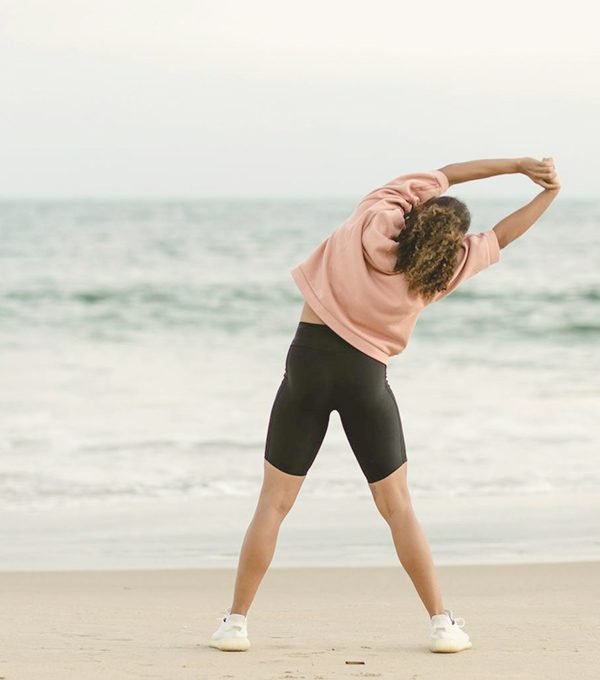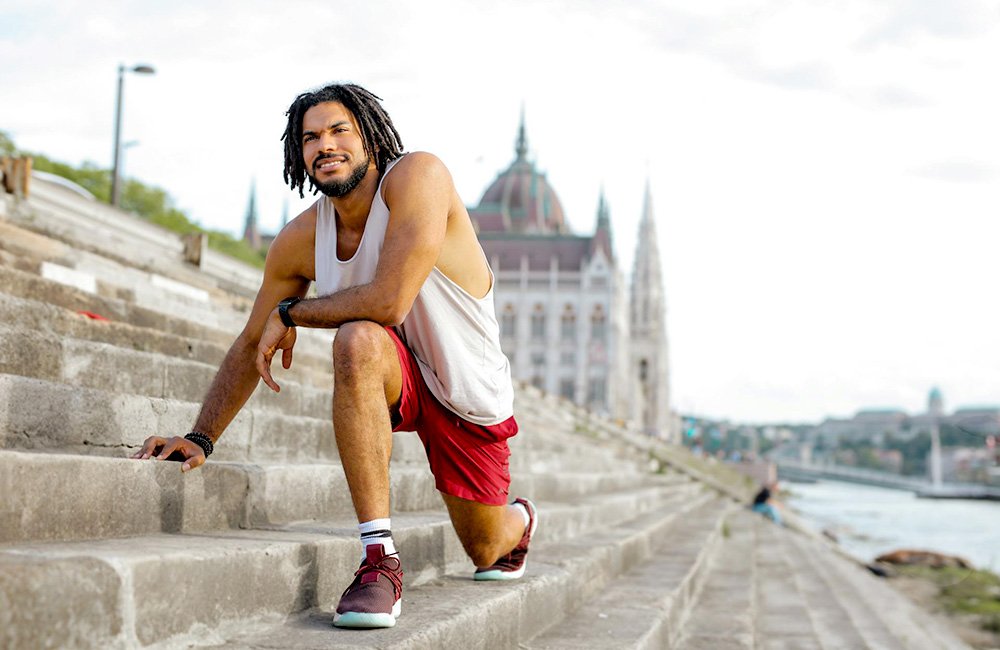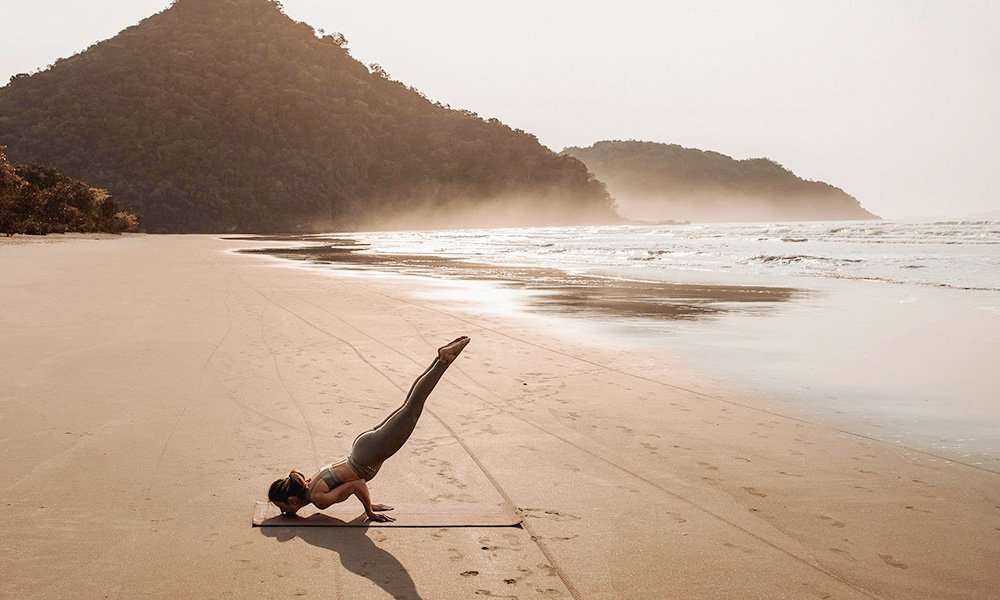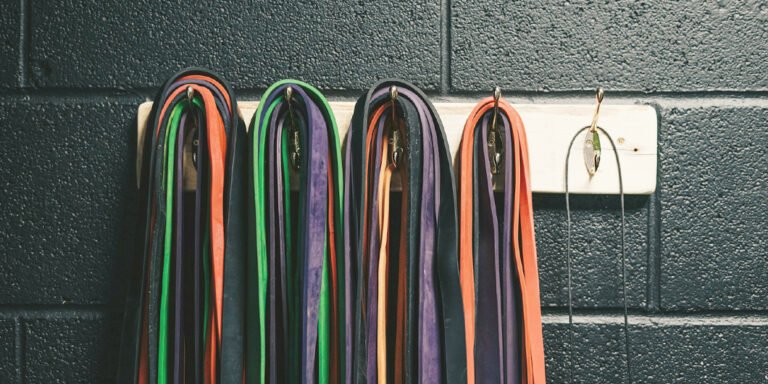
Maintaining physical activity while traveling can be challenging, but it is a great opportunity to discover varied and easily adaptable fitness routines. Because no equipment is needed, you can stay active while enjoying a coastal retreat, navigating urban landscapes, or being immersed in nature. This guide contains strategies and practical workout ideas for every destination. Thus, you have to put your health first.
Exercise While Traveling: A Comprehensive Guide to No-Equipment Workouts for Every Destination
Table of Contents
ToggleNew Posts
1. The Importance of Staying Active During Travel
Physical and Psychological Benefits of Travel Fitness
This helps in preserving the physical fitness and enhancing the mental well-being in continuing your workout routine while traveling. Stress resilience is normally enhanced by regular exercise through the release of endorphins, which in turn help to reduce anxiety and promote relaxation. It can also help in social engagement whether it is by joining a group hike or by participating in a yoga class at the place of destination. When you stay active you not only keep your health but also your ability to interact with people and have enjoyable times while traveling. So, exercise increases energy, enhances cognitive functioning, and enhances the development of endorphins, which help in stress reduction and positive attitude. In addition, it compensates for sedentary periods which are often encountered during long flights, bus rides or long driving.
Moving frequently can also benefit the immune system, which is particularly valuable when you are in new surroundings. Therefore, if you keep on moving, you are not only protecting your fitness, but also your overall capacity to enjoy every aspect of your trip.
Exercise as a Catalyst for Energy and Mood Regulation
Physical activity induces circulation and enhances oxygen delivery to tissues, opposing the fatigue of inactivity. Even brief sessions like a 10-minute high intensity workout significantly elevate mood and sharpen focus, enabling you to fully engage in your travel experiences.
Morning workouts can jumpstart your energy for the day, since your body is well rested and ready to move after waking up. They are also great for setting a positive, productive tone for the hours ahead. In contrast, evening sessions help clear the mind after a day of sightseeing or other travel activities. Some evening workouts can help relieve tension that has built up during the day and promote better sleep. The right exercise time is a matter of energy levels, schedule, and personal preferences. Tailor your exercises to your daily rhythm to keep you energized and motivated during your travels.
Strategies for Overcoming Common Barriers to Exercise While Traveling
Lack of space, time or resources are often a limitation on exercise routines during travel. But bodyweight exercises are location independent and need no special equipment. The key is to develop a flexible approach and to prioritize consistency over perfection. Include small routines, use your creativity to find spaces and don’t forget that small efforts can make a big difference.
2. Warm-Ups Tailored for Travelers
The Science Behind Effective Warm-Ups
To help prepare your muscles and joints for physical activity, reduce the risk of injury, and improve workout efficiency, a thorough warm-up is essential. Because of that, warm-ups are especially important for travelers to help undo some of the stiffness that comes with spending extended periods immobile. They also serve to get your body ready for the kind of activity you’ll be doing — hiking, walking tours, or otherwise exploring new destinations.
Compact and Dynamic Warm-Up Routines
Even in confined spaces like hotel rooms or airport lounges, warm-ups can be effective.
Examples include:
- Arm Circles: Mobilize shoulder joints and increase blood flow.
- High Knees: Elevate heart rate and activate the lower body.
- Bodyweight Squats: Engage major muscle groups while improving flexibility.
- Hip Flexor Stretches: Counteract the effects of prolonged sitting.
- Cat-Cow Pose: Loosen your spine and prepare for a full range of motion.
Pro Tip: Static stretches for the hamstrings, hip flexors and lower back help to ease the tension built up from traveling. Yoga poses such as the downward dog or seated forward fold are particularly effective in promoting relaxation and flexibility for a pre-ride warm-up. Hold each pose for 20-30 seconds for a deeper stretch, focusing on slow, deep breaths.
3. Comprehensive Bodyweight Workouts for Travelers
Cardio Workouts Without Equipment
You don’t need traditional gym equipment to get cardiovascular benefits. Try this simple cardio circuit:
- Jumping Jacks (30 seconds)
- Burpees (10 repetitions)
- Mountain Climbers (30 seconds)
- High Knees (30 seconds)
Repeat this sequence three to five times for a time efficient and heart pumping workout. To add variety, incorporate lateral jumps or speed skaters to challenge your coordination and agility.
Strength-Enhancing Bodyweight Exercises
Bodyweight exercises are very effective for building strength and endurance. Examples include:
- Push-Ups: Strengthen the chest, shoulders, and triceps. Variations such as incline or decline push-ups can adjust difficulty.
- Squats: Target the quadriceps, hamstrings, and glutes. Jump squats add a plyometric challenge.
- Lunges: Improve lower body strength and stability. Consider reverse lunges for a joint-friendly alternative.
- Plank Variations: Engage the core, shoulders, and back muscles. Side planks and shoulder taps add dynamic elements to a traditional plank.
Core-Centric Workouts for Balance and Stability
Core strength improves balance and overall athletic performance. Include the following in your routine:
- Bicycle Crunches (20 reps per side)
- Leg Raises (15 reps)
- Side Planks (Hold for 20-30 seconds per side)
- Russian Twists (15 reps per side)
- Flutter Kicks: Great for lower abs and hip flexor endurance.
4. Destination-Specific Workout Ideas
Beach-Based Travel Workouts: Maximizing Sand’s Natural Resistance
The soft sand increases the resistance and thus the intensity of traditional exercises. Consider:
- Walking Lunges: Build leg strength and improve flexibility.
- Sprint Intervals: Perform short, high-intensity sprints for cardiovascular benefits.
- Plank Holds: Stabilize the core while adapting to the uneven surface.
- Bear Crawls: Engage multiple muscle groups while navigating the sand’s instability.
Urban Fitness Opportunities
Urban environments provide diverse opportunities for exercise while traveling:
- Stair Workouts: Use public staircases for cardio and strength building. For example, iconic places like the Spanish Steps in Rome or the Lyon Staircase in San Francisco provide the opportunity to combine sightseeing with an invigorating workout.
- Park Bench Exercises: Incorporate step-ups, tricep dips, or incline push-ups.
- Wall Sits: Engage quadriceps and core muscles in a static strength hold.
- Side Shuffles: Use open areas to improve lateral movement and agility.

Nature-Inspired Routines on Trails and Outdoor Spaces
Natural environments enhance the sensory experience of workouts. Try:
- Hiking: Combine cardiovascular endurance with scenic exploration.
- Trail Runs: Use terrain variations for interval training.
- Bodyweight Circuits: Pause at scenic locations for exercises like squats and push-ups.
- Log Lifts or Step-Ups: Utilize natural elements for resistance training.
5. Small Equipment for Travel Workouts
Why Consider Small Equipment?
Small fitness equipment can really enhance your outcome, not to mention they make your workouts easily portable. These tools are versatile as they come with different types of resistance that help you isolate particular parts of your body or simply add variety to your workouts. For example, resistance bands are small and lightweight and can mimic the effect of weights and thus perfect for a travel strength training sessions. A jump rope is another great example of a compact cardio option that is as intense as the equipment you would find at a gym. Other tools like mini foam rollers are also helpful in enhancing recovery and flexibility by relieving the muscle tension that a traveller may have after a long day of traveling.
Recommended Travel-Friendly Equipment
- Resistance Bands: Perfect for strength training and stretching. Use them for squats, bicep curls, or lateral band walks.
- Jump Rope: A compact cardio tool that delivers an intense workout in minutes.
- Mini Foam Roller: Ideal for recovery, relieving tension, and improving mobility.
- Travel Yoga Mat: Provides cushioning and grip for yoga or floor exercises anywhere.

Incorporating Small Equipment into Workouts
You can enhance your travel workouts by including small, portable fitness equipment. Resistance bands are useful for increasing the intensity of squats or lunges through the addition of resistance, in order to better engage and target one’s muscles. A jump rope is another great tool to incorporate, for doing quick, high intensity cardio intervals between strength training sets, increasing your heart rate and burning calories in a short amount of time. A mini foam roller can be used during your cool down to help relieve muscle tension, improve flexibility and prevent soreness after a long workout or day of exploring. These basic additions make your travel workouts more dynamic and effective, and they are easy to pack and carry on any trip.
6. Strategies for Maintaining Motivation While Traveling
Goal Setting for Travel Fitness
Learn to break down your goals into achievable objectives, such as doing 15-20 minutes of physical activity or following certain routines that suit your schedule. Step wise increase is important for the purpose of continuous and enduring achievement. Additional source of motivation is the goal based destination directions, for example, finishing a walk or mastering a yoga pose before the end of your trip.
Utilizing Technology to Track Fitness Progress
Fitness apps provide bodyweight exercises and exercise logs to track progress. It is very useful in visualizing milestones and consistency metrics in order to boost motivation and accountability. Some apps also give location based ideas of how to stay active.
Incorporating Workouts into Daily Itineraries
Just as you should plan your workouts to align with your fitness goals, you should also try to plan them to align with your travel workout plans. Doing a morning workout sets a positive tone for the rest of the day; doing a brief workout during a layover or some other period of downtime helps ensure that you are consistent. You should be flexible with your scheduling. The exercise and movement can be combined with the travel like a walking tour or a cycling excursion to link the fitness with the travel easily.
7. Stretching and Recovery Techniques for Travelers
Post-Workout Stretching
This is where the cool down comes in – it’s important for recovery and preventing muscle stiffness. Effective stretches include:
- Hamstring Stretch: Alleviates tension in the posterior chain.
- Chest Opener: Counteracts forward posture from sitting.
- Child’s Pose: Promotes relaxation and spinal decompression.
Yoga Poses for Relaxation and Muscle Recovery
Yoga is a practice of mindfulness and physical postures that is particularly useful when traveling. The deep breathing and being present that are encouraged by yoga reduce stress. It is this combination of the two that helps in relaxing and in recovering from long and tiring days of traveling or from other forms of physical activity. Recommended poses:
- Downward Dog: Stretches the shoulders, hamstrings, and calves.
- Pigeon Pose: Opens the hips and reduces lower back tension.
- Seated Forward Fold: Enhances flexibility and calms the mind.
- Legs Up the Wall: Reduces swelling in the legs and promotes relaxation.

Practical Tips for Reducing Post-Exercise Soreness
Combat soreness with these techniques:
- Hydration: Supports metabolic recovery and muscle repair.
- Gentle Movement: Promotes circulation and eases stiffness.
- Self-Massage: Use a tennis ball to target sore areas for myofascial release.
- Epsom Salt Baths: A relaxing way to soothe tired muscles and improve recovery.
It is therefore possible to combine fitness and travel in a creative way. With bodyweight exercises, destination-specific routines and the right attitude, fitness is not something you have to sacrifice while on the move. Let your trips not only be a source of exploration but also of health.
New Posts
Related Posts
KEEP IN TOUCH.
SUBSCRIBE TO GET
THE LATEST
NEWS & UPDATES
















